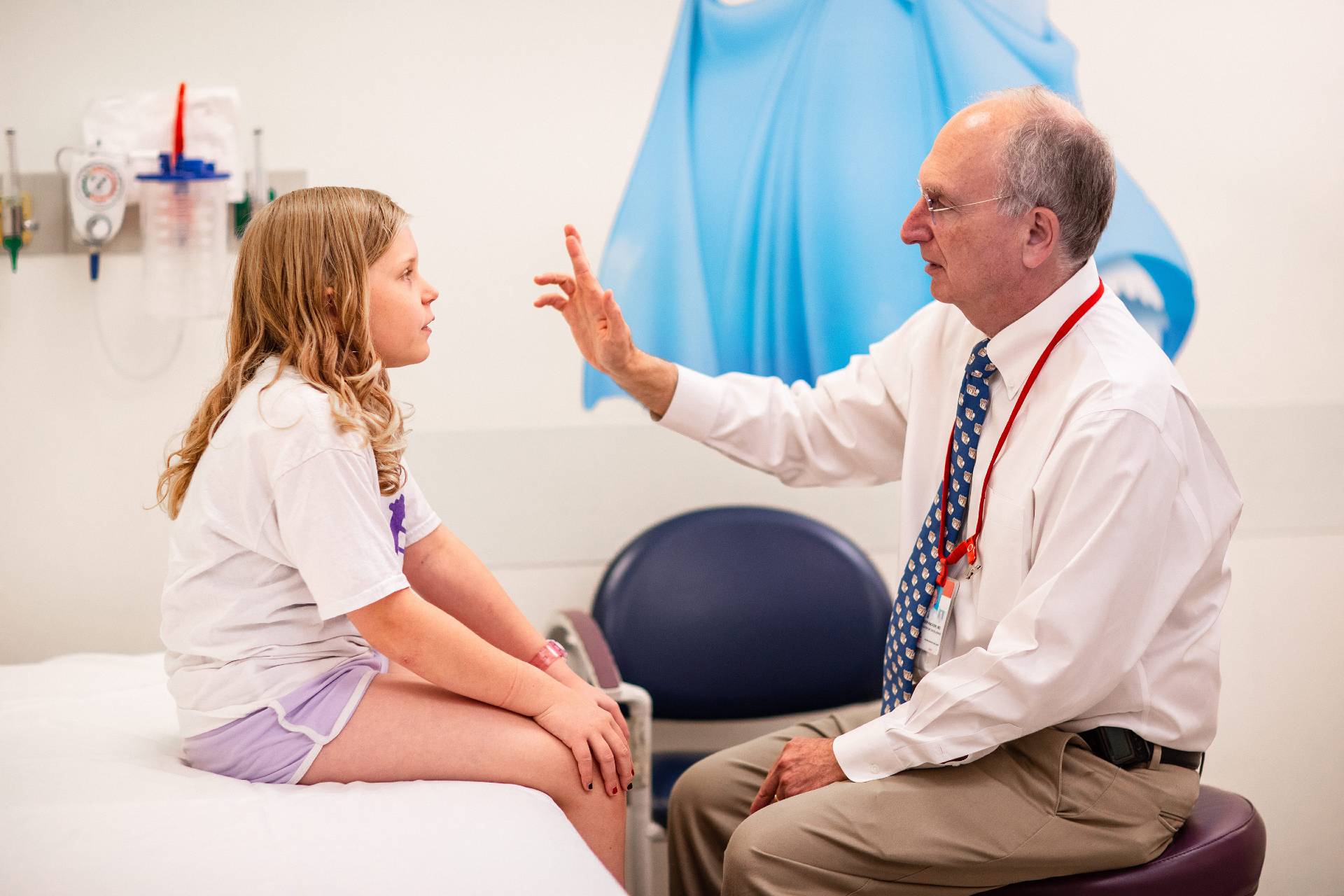Caring for Neurofibromatosis Patients
At Children's National, we treat the whole child, paying special attention to both their physical and emotional needs. Here are some of the particular treatments we use to care for our patients.
NF1 is a life-long condition usually diagnosed early in life, often within the first year. NF1 is diagnosed based on specific skin, ocular and other physical findings, and genetic blood testing in selected cases. Half of all children who have NF1 inherited the disease from an affected parent, while the other half has no family history, meaning that the disease occurs spontaneously. NF1 occurs once in approximately 3,500 births and is characterized by:
- Multiple café au lait (light brown) spots
- Neurofibromas (benign tumors growing on the sheath of a nerve) on or under the skin
- Enlargement and deformation of bones and curvature of the spine (scoliosis)
- Tumors that may develop in the brain, on cranial nerves or in the spinal cord
- Learning disabilities, in about half of people with NF1
Although NF1 is a congenital (present at birth) condition, the full extent of the disease is usually revealed only as a child grows and develops. More than 95 percent of children with NF1 develop multiple café au lait spots. Young children with multiple café au lait spots and no other NF1 features, whose parents do not show signs of NF1, are still at risk of having NF1. For many children, other aspects of NF1 can increase with age.
There are many complications associated with the condition, some of which are treatable and others for which there are new biologic-based therapies offering hope. Care for this complex disorder requires a multidisciplinary team of specialists.
Confirming Your Child's Diagnosis
Some families and physicians may choose to use a genetic test to confirm an uncertain diagnosis of NF1. Available genetic testing can confirm the presence of a mutation in the NF1 gene with an accuracy of 95 percent.
Prenatal testing for the NF1 mutation is possible using amniocentesis or chorionic villus sampling procedures. Genetic counseling, available through the institute, can help couples affected by NF1 to work through the decision-making processes as they plan to have a baby.
While there currently is no cure for NF1, effective medical care includes preventing or minimizing deformities and maximizing the child's capabilities. There also are new agents being tested that may control or reverse some of the complications of NF1, and the Institute is a leader in developing and testing such therapy, through its clinical trials.
Recommended Treatment and Follow-up Care
In general, a child or teen with NF1 should have a complete medical evaluation at least once a year. Since there is a higher than average risk for learning disabilities, children with NF1 should undergo a detailed neurological exam before they enter school.
Regular eye examinations are also an important part of managing NF1. Lish nodules, which are small bumps on the iris of the eye, can help establish a diagnosis of NF1.
Complications Associated with Neurofibromatosis
NF1 is a highly unpredictable and progressive disease, which may worsen over time. Some people may go through life with only a few café au lait spots and bumps on the skin and be unaware they have the condition, while others may develop complications requiring medical intervention.

Make the Most of Childhood Summers
We recognize dealing with a chronic illness is difficult for children and families, so we promote opportunities that allow our patients to enjoy the normal diversions of childhood. Each summer, our care team staffs Camp New Friends, the largest neurofibromatosis camp for children (ages 7 to 16) on the East Coast.




